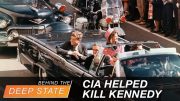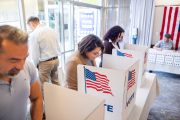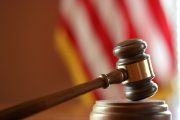
The Secret Service permitted local cops to handle perimeter security at the campaign rally for former President Donald Trump in Butler, Pennsylvania, where Thomas Matthew Crooks attempted to assassinate the 45th president.
But a more disturbing disclosure followed that report in The Washington Post.
ABC News reported that the building from which Crooks fired at Trump from about 150 yards was the staging area for law enforcement. NBC reported that the building’s rooftop was identified as a major risk, but no cops or Secret Service agents were stationed there.
Meanwhile, conservative commentator and former agent Dan Bongino told Fox News’ Jesse Watters that Secret Service agents weren’t protecting Trump. Many of those on his detail, he said, were Homeland Security Investigations agents.
Cops Had Perimeter Job
The Secret Service works with local police on presidential visits, but in this case, that clearly wasn’t wise, given what the Post reported.
“Secret Service spokesman Anthony Guglielmi confirmed Sunday that the agency relied on local police at the Trump rally to fill out significant parts of its typical array of specialized protective units — including its heavily armed counterassault team that provided cover as Trump’s detail evacuated him and the countersniper teams that ultimately spotted and killed the shooter,” the newspaper reported:
It is standard practice for the Secret Service to ask local police to secure the outer perimeter of public events involving the president and senior officials, and the agency frequently seeks to augment its teams for candidates’ events.
But some experts on Sunday questioned whether adding local units — who may not receive the same level of training as Secret Service agents — could create risks given the profile of Trump and the enmity he has engendered among his detractors.…
The Secret Service had two of its counterassault agents on the scene and filled out the rest of the typical platoon with at least six members of Butler County tactical units, Guglielmi said. Two Secret Service countersniper teams were on the scene, but two additional teams that had been recommended for adequate protection at the rally were staffed by local units, he said.
Former GOP Representative Jason Chaffetz (R-Utah), who chaired the House Oversight Committee, said local cops don’t have the training needed to protect a president.
In 2015, a committee report averred that “the Secret Service is in crisis.” Chaffetz, the Post observed, said the agency doesn’t have the resources to do its job: protecting the president.
“Could there be a bigger threat profile than for President Biden and President Trump? That’s as big as it gets,” Chaffetz told the Post. “They wear these agents out especially during the campaign. Part of what our report shows is they are spread too thin. Now they are apparently relying heavily on local police. With all due respect to local law enforcement, they are just not trained up to do this.”
The woman who runs the Secret Service, Kimberly Cheatle, will appear before the committee on July 22.
Building Was Staging Area for Cops, Rooftop a Known Threat
Besides the Secret Service’s relying on local cops, “the building where gunman Thomas Crooks scrambled onto the roof and opened fire was the staging area for the local police tactical team doing overwatch of the crowd,” ABC News reported, citing “two law enforcement officials”:
Sources previously told ABC News that the building had been swept, but investigators are trying to determine whether roof access had been properly locked down.
The gunman gained roof access without a ladder, according to a source briefed on the preliminary findings.
As well, “in the days before the event” the agency knew the rooftop was a spot from which the president could be shot, NBC reported, citing two anonymous sources. “The Secret Service was aware of the risks associated with it, the sources said”:
“Someone should have been on the roof or securing the building so no one could get on the roof,” said one of the sources, a former senior Secret Service agent who was familiar with the planning.
The Secret Service worked with local law enforcement to maintain event security, including sniper teams poised on rooftops to identify and eliminate threats, Secret Service spokesman Anthony Guglielmi said. But no officers were posted on the building used by the would-be assassin, outside the event’s security perimeter but only about 148 yards from the stage — within range of a semiautomatic rifle like the one the gunman was carrying.
The Secret Service had designated that rooftop as being under the jurisdiction of local law enforcement, a common practice in securing outdoor rallies, Guglielmi said.…
The former senior Secret Service agent also said that even if local law enforcement “did drop the ball,” it’s still the agency’s responsibility “to ensure that they are following through either beforehand or in the moment.”
“Just because it is outside of the perimeter, it doesn’t take it out of play for a vulnerability, and you’ve got to mitigate it in some fashion,” the source added.
Another former agent, Anthony Cangelosi, who guarded 2004 Democratic presidential candidate John Kerry, told NBC he wants to know how the shooter got “onto that roof undetected.”
He said “mistakes were made” and the attempted assassination was “preventable.”
Continued NBC:
Although it’s common to task local law enforcement agencies with patrolling outside an event’s security perimeter, Cangelosi said, the ultimate responsibility for ensuring that all vulnerabilities are covered rests with the Secret Service.
If officials had placed an officer on the building where the gunman fired from, Cangelosi said, chances are he “wouldn’t even attempt what he attempted.”
“You don’t surrender the discretion of what’s supposed to be done to the local police,” he said. “In other words, you guys have the outer perimeter, but you would want to say, ‘We need an officer on that roof.’ Not ‘that’s your responsibility; do what you see fit.’”
A third federal agent, this one from the Bureau of Alcohol, Tobacco, Firearms and Explosives who has worked with the Secret Service, said the same thing. Not putting officers on the roof was a “tremendous lapse.”
“The only way to stop that is you have a lot of people, you get there first, and you command the high ground,” Jim Cavanaugh told NBC. “This is basic, and the Secret Service has done it for years successfully, so I’m really surprised that they did not have that high ground covered.”
Bongino: Protective Detail Had Homeland Security Agents
As if those revelations weren’t bad enough, former agent Dan Bongino reported that the protective detail included personnel who are not even Secret Service.
Bongino’s sources told him “very few” were agents, he told Watters:
I don’t want to give an exact number, but very few actual … I don’t think anyone else has reported this … actual Secret Service post standers at that site, that they were temp [Homeland Security Investigations] folks.… That’s not what they do specifically.… We do protection and we’re trained for that…. I’m also hearing that the countersniper team … had a problem seeing over the elevation. That’s why they didn’t engage right away.
But an even bigger problem, he said, was the lack of aerial and high-tech surveillance equipment.
“Where the hell was the aerial visual support?” he asked. “Why was there no helicopter? Why was there no drone? Why was there no FLIR? Why was there no thermal forward-looking infrared? How the hell is the crowd acting as the freaking counter-surveillance operation?”




